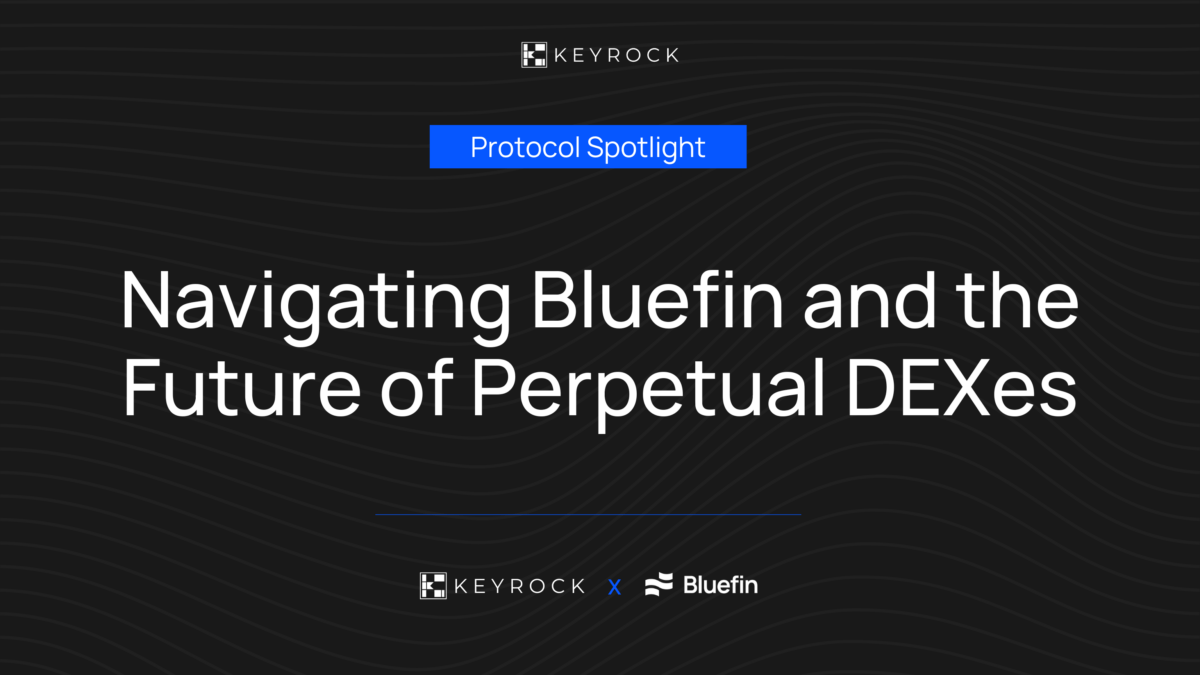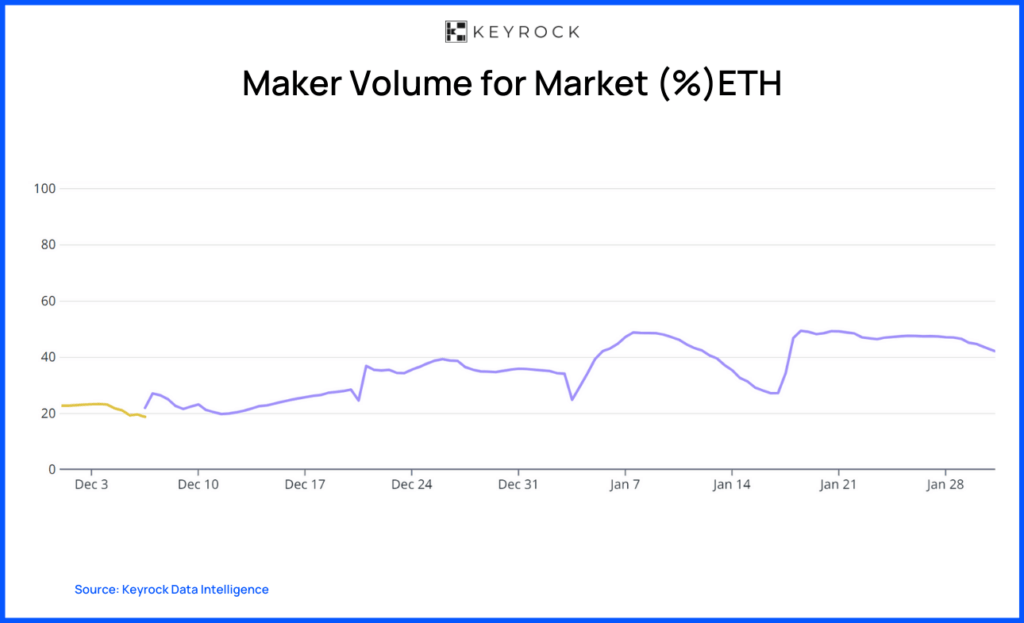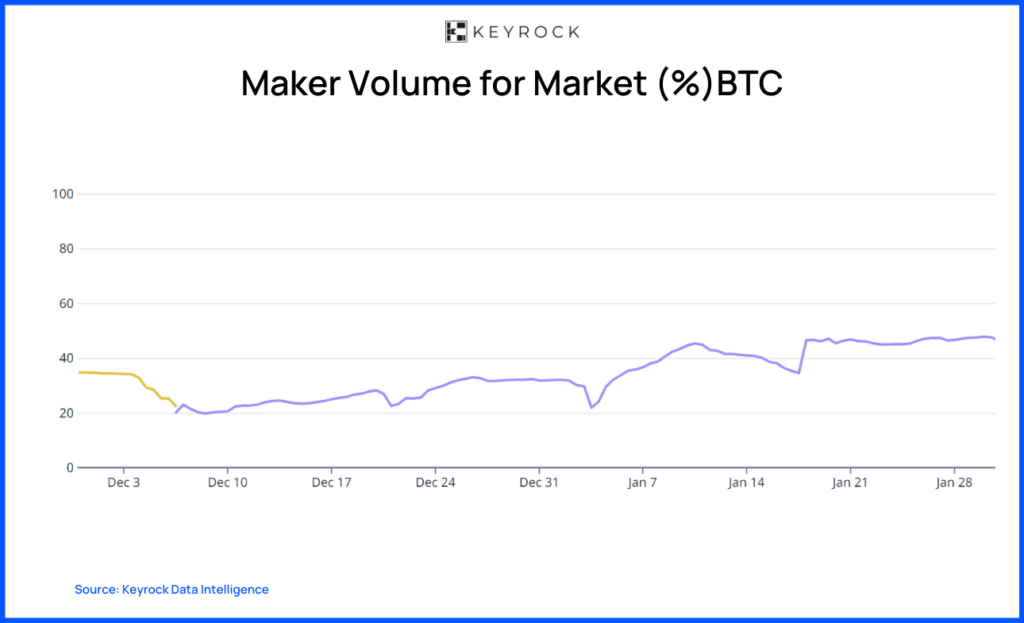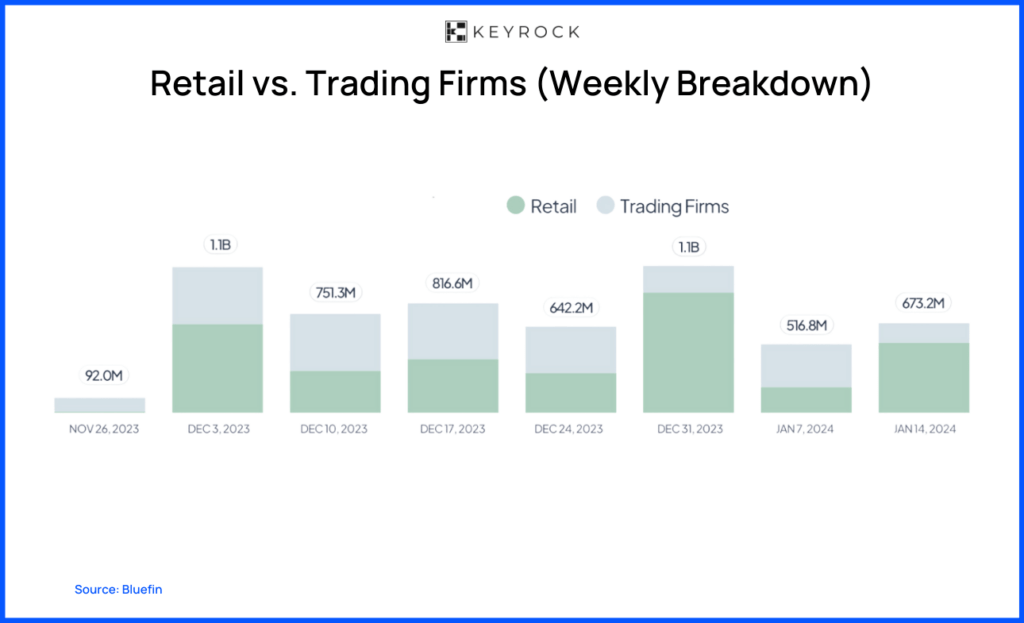Centralized exchanges (CEXs) have engaged in a war to offer the lowest fees, the deepest, and the fastest execution to their users. Can decentralized exchanges (DEXs) compete with such strong value propositions?
When inspecting historical volumes, a tangible shift from CEXs to DEXs can already be seen in the spot markets. Currently, DEXs have grown to take around <10% of the current volume, even reaching 15% through 2023. This signals that there’s a growing number of users who want to trade on-chain.
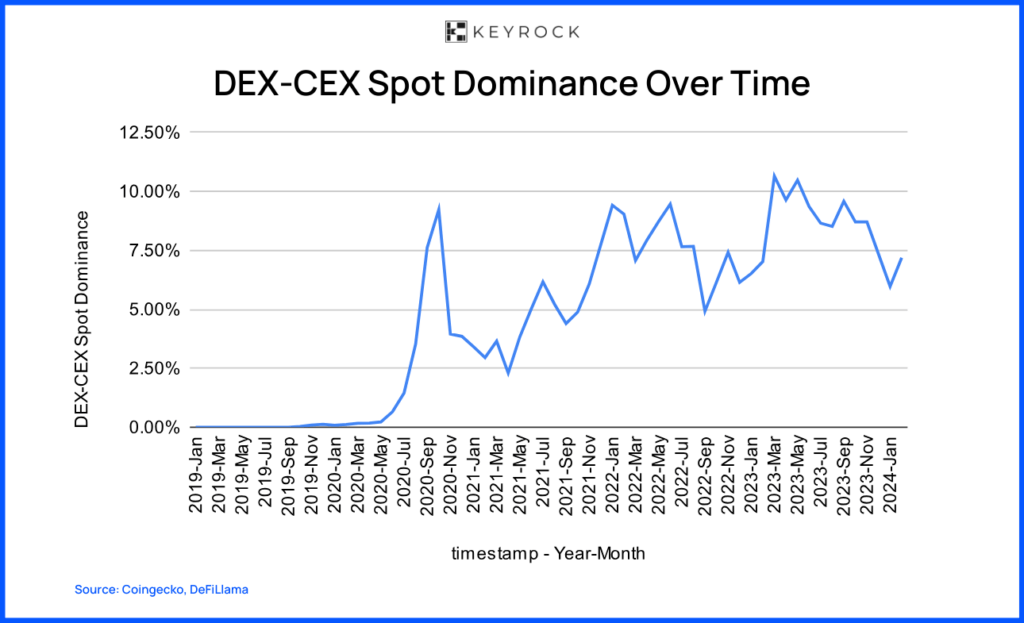
However, adopting on-chain trading has yet to happen when it comes to the perpetual futures markets. This slower adoption echoes the pre-DeFi-Summer landscape regarding the spot markets, which were mainly happening on centralized exchanges before DEXs came as strong competitors. As a result, such similarity raises the hypothesis about a similar shift happening in favor of perpetual future adoption of DEXs, translating to more volume on these venues.
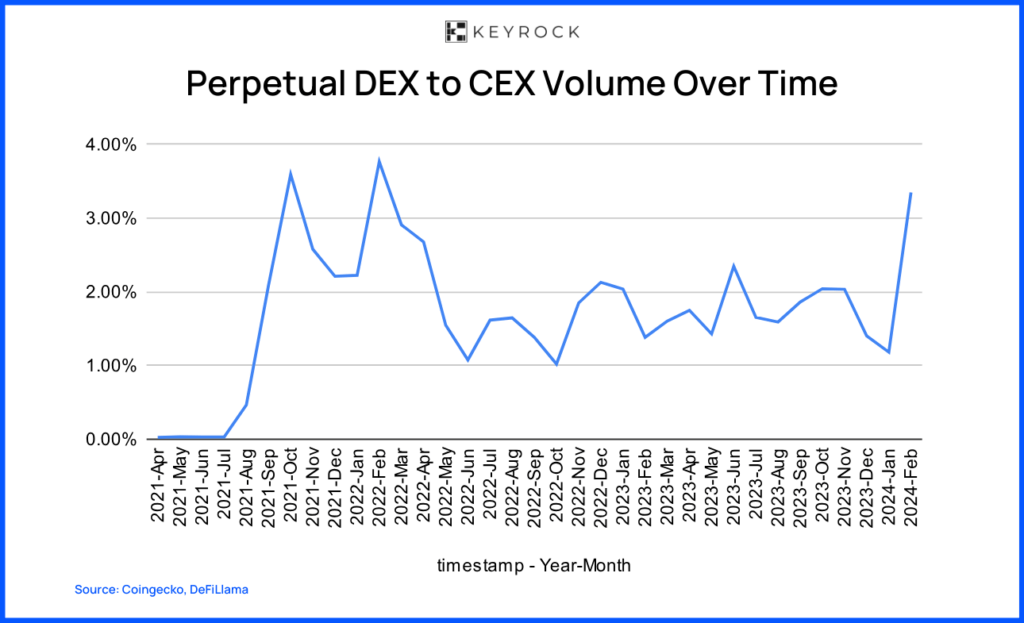
It might seem logical to attribute the lag in the Perpetual DEX vs. CEX adoption to the overall lack of adoption of perpetuals trading. However, this is not the case. As seen below, the volume of Perpetuals on CEXs increased 25 times from 2019 to 2021.
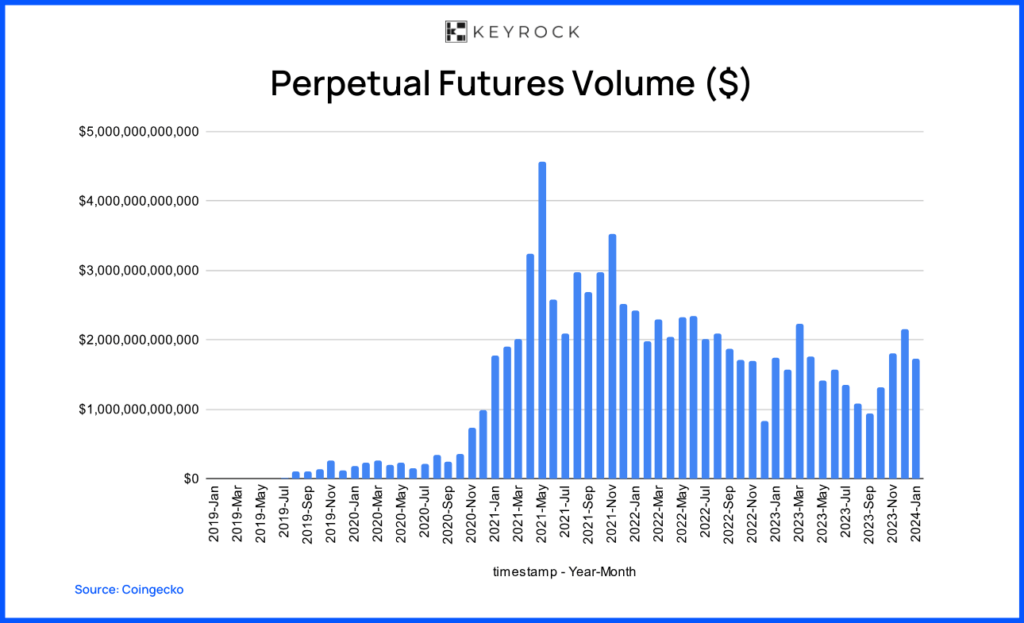
When investigating the volumes of perpetuals on decentralized exchanges, we’ve observed a strong contrast between periods.
During the later part of the last bull run (late 2021), we can observe values of around $20 to $30 billion a week. However, during the 2022 bear market, there was a significant decrease in volumes, which is consistently below $10 billion–with the notable exception of the roughly $20 billion spike in on-chain volumes in November 2022 due to the FTX collapse.
Nevertheless, the future looks bright. Despite prices, sentiment, and peak euphoria not at an all-time high, the on-chain volumes have picked up and closely resemble those of late 2021. As time passes and the market matures, we can expect more sophisticated actors to move to crypto, taking part in their activities on-chain.
As on-chain trading activity grows and the tech stack improves, protocols will become better equipped to accommodate this higher flow of onboarding users. We seem to be on the brink of a breakthrough, signaling a period of significant expansion and opportunity within the Perp-DEX ecosystem.
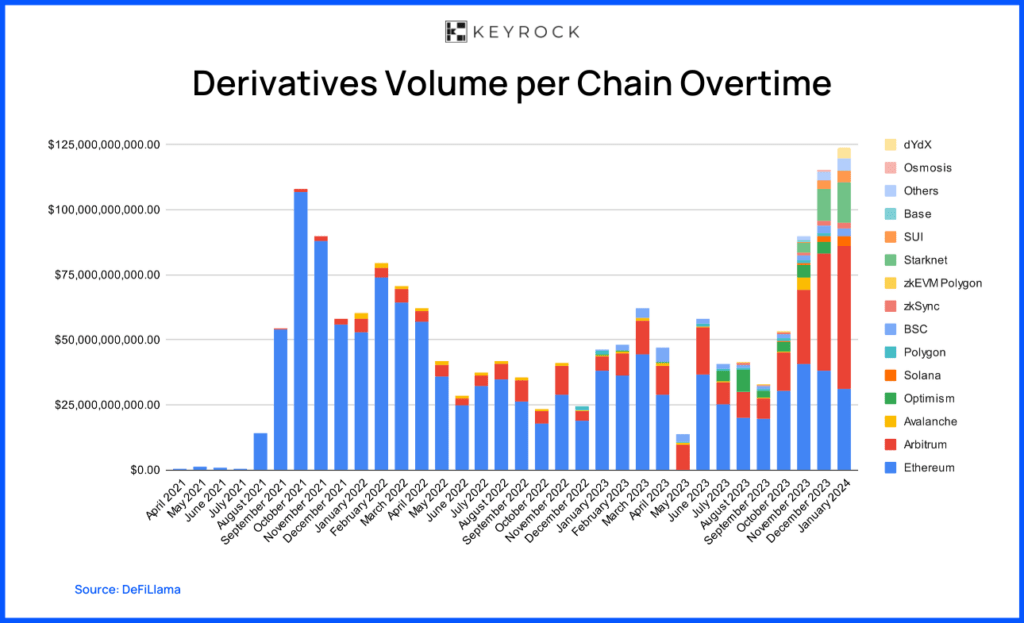
Engaging with DeFi goes beyond strategic market-making or investments; instead, it serves as a gateway for financial innovation. Keyrock embraces these DeFi’s values, including self-custody of assets, interoperability, accessibility, and transparency.
As facilitators, we are actively looking for protocols that develop user-friendly infrastructure and interfaces that simplify integration so that we can enable Perp-DEXs to absorb the flows of traders looking to trade on-chain. We seek to facilitate the continued growth in Perp-DEXs by improving liquidity and creating efficient and accessible markets for all.
